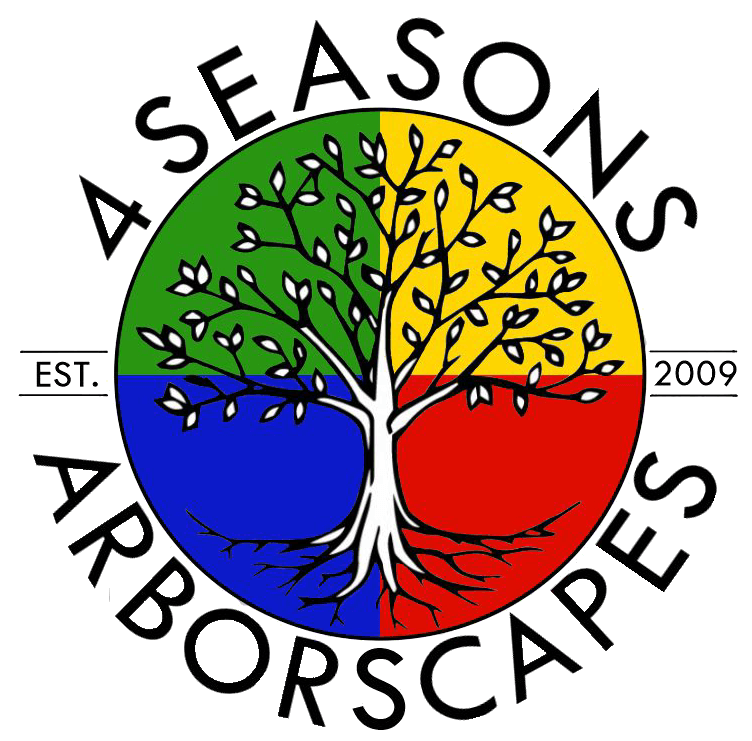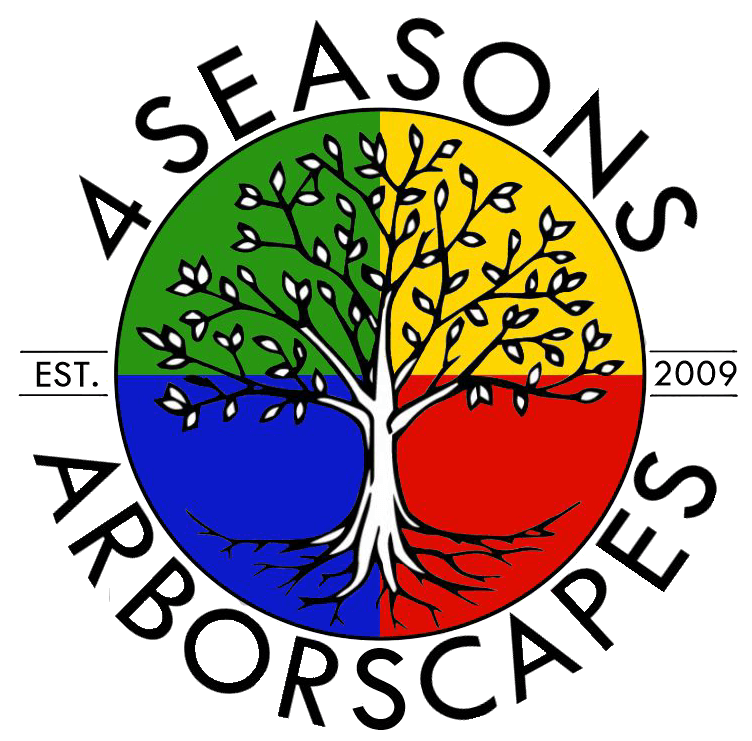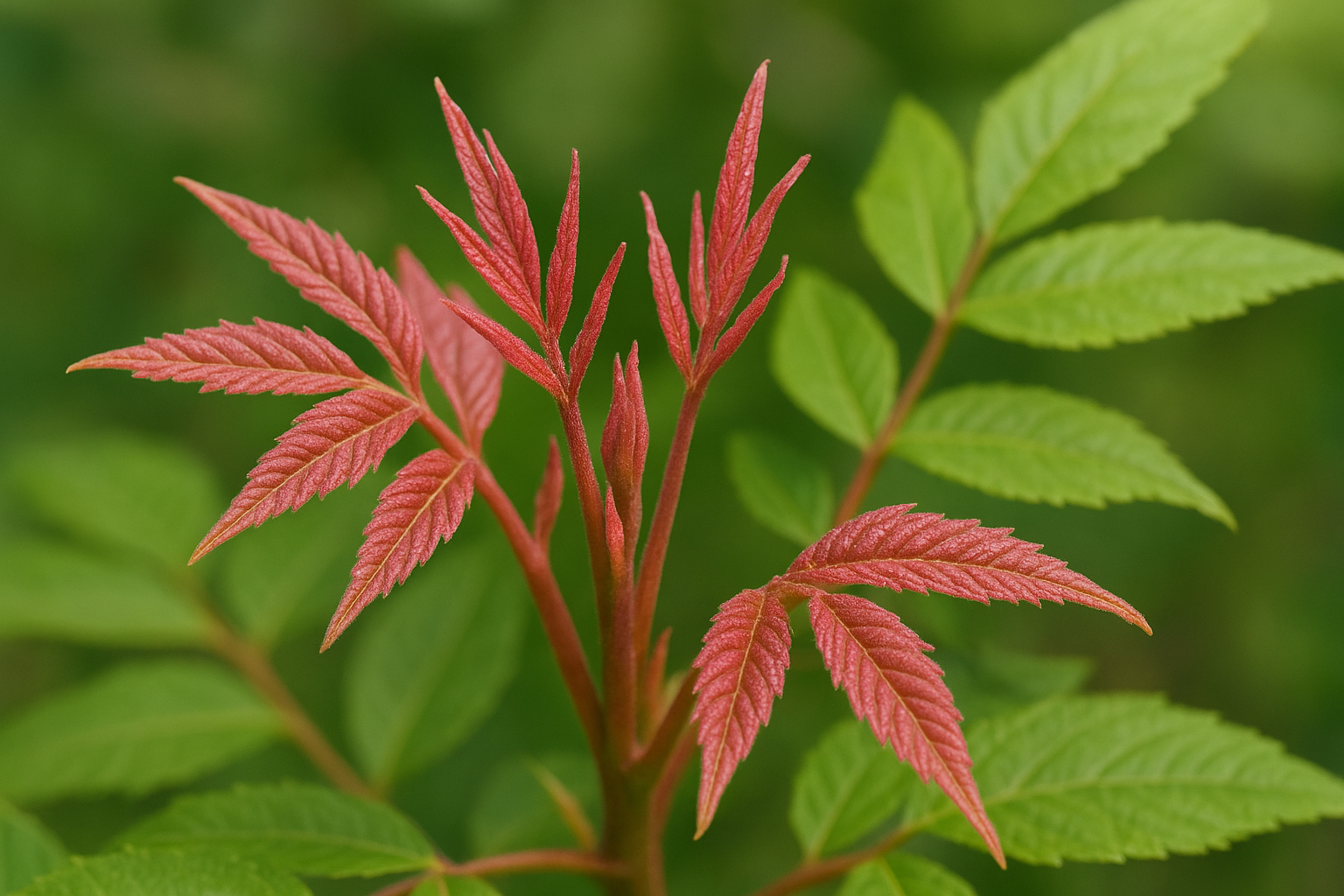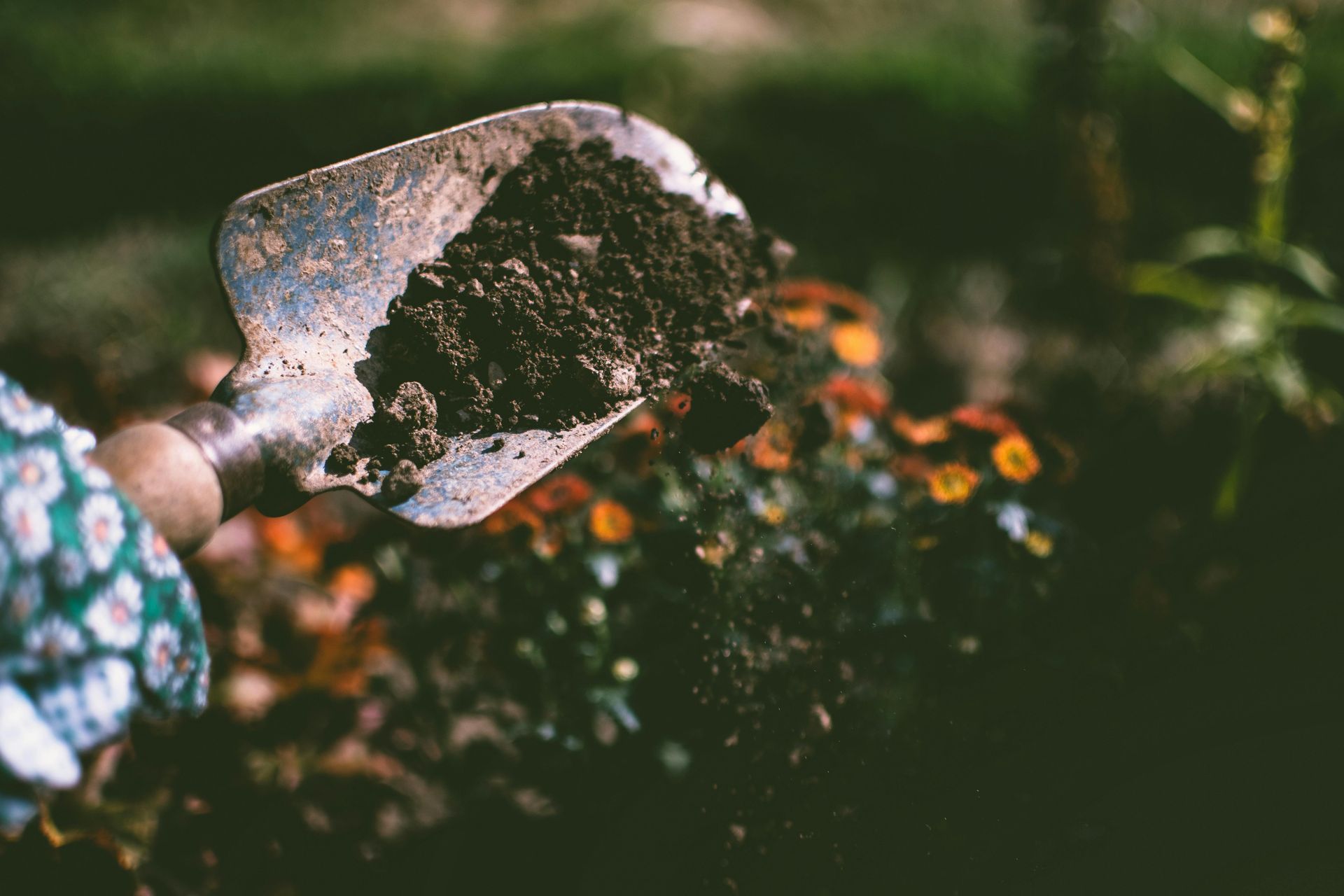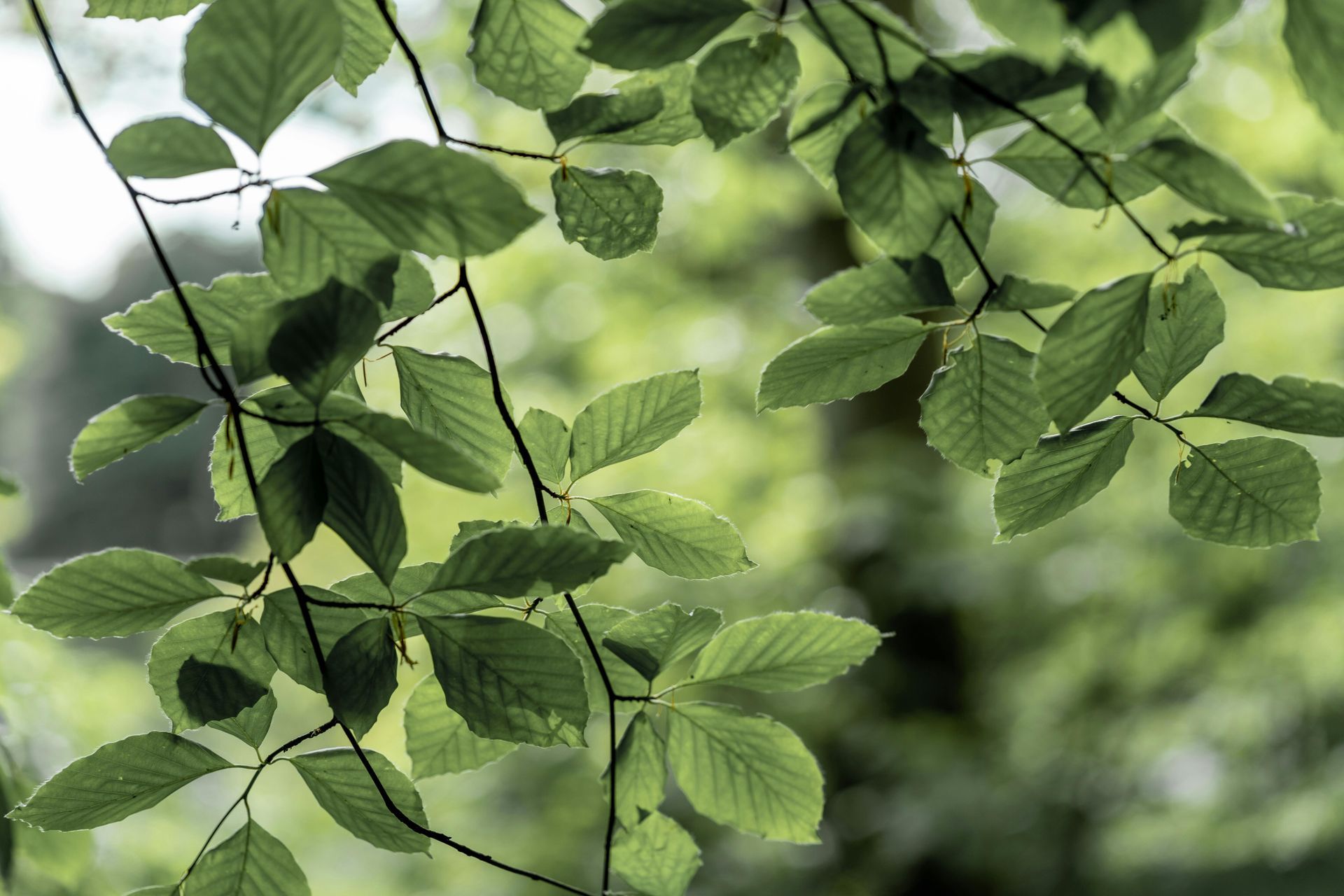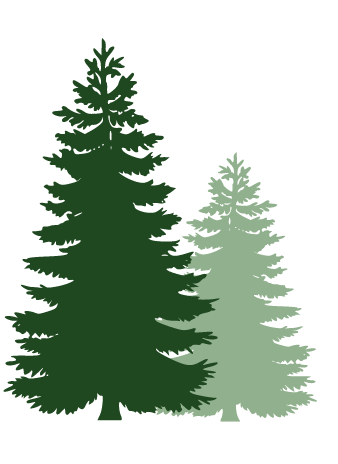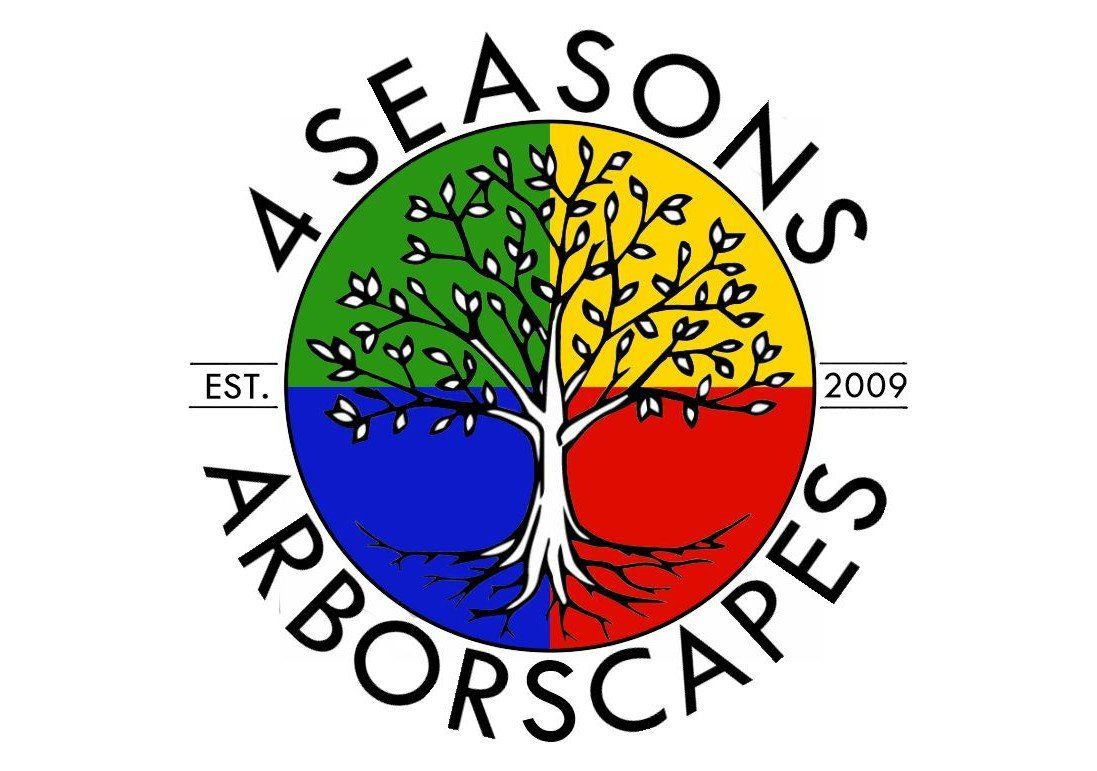Gardening for Pollinators: Plants that Attract Butterflies and Moths
Their graceful flight and vibrant colors bring joy and wonder to any outdoor space. If you're yearning to create a haven that welcomes these enchanting creatures, planting a butterfly and moth-friendly garden is the way to go. It's not just about the visual appeal but also about supporting biodiversity and fostering a healthy ecosystem right in your backyard.
This next part in our series, Gardening for Pollinators, focuses on how to optimize your garden for butterflies and moths. By establishing even one plant with these insects in mind, you are helping to ensure they have the food and habitat they need to thrive. In this blog, we will discuss native flowers, trees, and other plants to attract butterflies and moths, as well as easy ways you can provide pollinator nesting sites and refuge from damaging pesticides.
Some Helpful Tips:
- Not every plant in your garden needs to be native. However, native plants have adapted specifically to your climate and have special relationships with local insects.
- Select your plants with care. If you have a dryer area, consider native plants that are naturally drought tolerant. If you have a wet area, consider moisture tolerant plants. Also, choose plants that continuously bloom throughout the growing season to cater to the largest number of pollinators.
- Plant in clusters to create a “target” that pollinators will come back to.
- Leave room for wildflowers and weeds (weeds have a purpose too!).
- Plant a variety of plants with diverse sources of nectar like trees, shrubs, and flowers.
- Install a rain barrel to catch water to keep your plants hydrated.
- Prevent runoff and retain moisture by placing organic mulches such as compost, wood chips, or bark
- Include larval host plants in your landscape. The larvae will feast on them, so place the host plant where unsightly leaf damage can be tolerated.
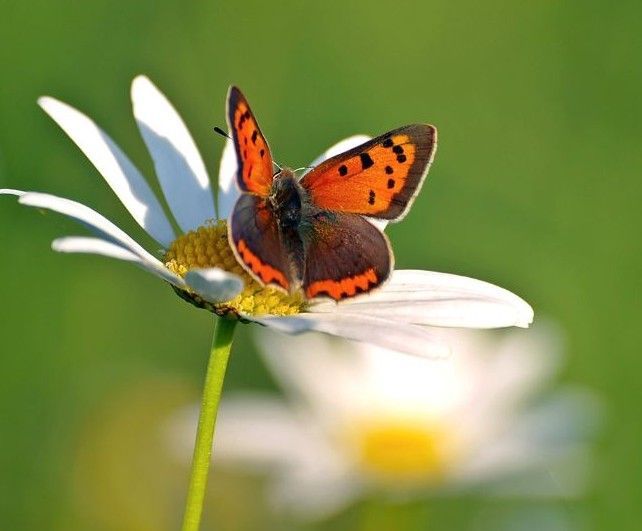
Flowers that Attract Butterflies
Butterflies are attracted to flowers because they hunt nectar, collecting pollen on their legs and body as they search for food. Butterflies pollinate during the day while flowers are open. Butterflies, just like bees, enjoy a wide range of annual and perennial flowers.
Marigolds are considered the perfect pollinator flower. They are bold, bright, and colorful, and will attract a wide range of butterflies with its bountiful nectar supply. You can grow marigolds in containers, raised beds, and in the ground. They require little maintenance and will grow in most soil types but prefer well-drained soil. Morning sun is best for this flowering plant, and filtered sun during the hottest part of the day.
Salvia is a great tubular flower that butterflies love. They flower for an extended period of time and do well in hot, dry conditions. There are a variety of colors and shapes to choose from so you’ll always have something new to try.
Butterflies flock to sunflowers for their bright coloring, large flower heads, nectar, and lush foliage that makes excellent caterpillar food. When planting sunflowers, choose a sunny spot sheltered from strong winds. Be sure to plant them in large ‘target’ groups rather than scattering them.
Milkweed is known for attracting butterflies and serving as a host plant for their caterpillars. In particular, milkweed is the only plant family that serves as host plant for monarch butterflies to lay their eggs. Milkweed spreads rapidly after self-seeding if the pods are not removed. The flowers are pink, white, purple, lavender, and light orange. It prefers full sun and dry, well-drained soil.
Hollyhocks are an excellent addition to any pollinator garden. They are annuals and biennials but will reseed themselves (effectively making them perennials). They come in white, pink, yellow, purple and red. Hollyhocks prefer full sun and rich, well-drained soil.
Due to their bright colors and sweet nectar, pansies are a great addition. Viola wittrockiana is a popular and fragrant variety attractive to many butterfly species. Its bright and vibrant colors also make it an ideal choice. The flowers come in various varieties and colors, from deep purples to soft whites. Additionally, these plants are hardy and can tolerate slightly cooler temperatures than other types of pansies, making them suitable for most climates.
Phlox – a worthy addition and butterflies would agree. Phlox is a perennial that has showy blooms and a sweet fragrance. Phlox flowers come in various shades of blue, pink, red, and white. The Magenta Pearl phlox, for example, has clusters of bright pink flowers in tall stems, the lush foliage provides added protection. They prefer full sun to part shade and like medium moisture, and well-drained soil.
Shasta daisies are a neighborhood favorite—they are easy to grow and, when maintained, will keep butterflies coming year after year. These flowers like good sunlight and consistently moist soil. Daisies are some of the brightest blooms in the garden, making it easy for butterflies to see them. You can choose varieties that produce red, orange, white, and yellow flowers. Because butterflies cannot drink nectar mid-flight, the petals act as platforms for the insects to land on and access their sweet nectar.
Snapdragon blossoms come in a multitude of bright colors that will catch the eye of any pollinator—pink, red, lavender, white, orange, bicolor, speckled, maroon, salmon, magenta, you name it. The flowers provide ample nectar for butterflies, and the leaves provide a place for females to lay their eggs. However, snapdragons prefer cooler temperatures, and therefore are usually grown as annuals. They prefer full sun and well-drained soil.
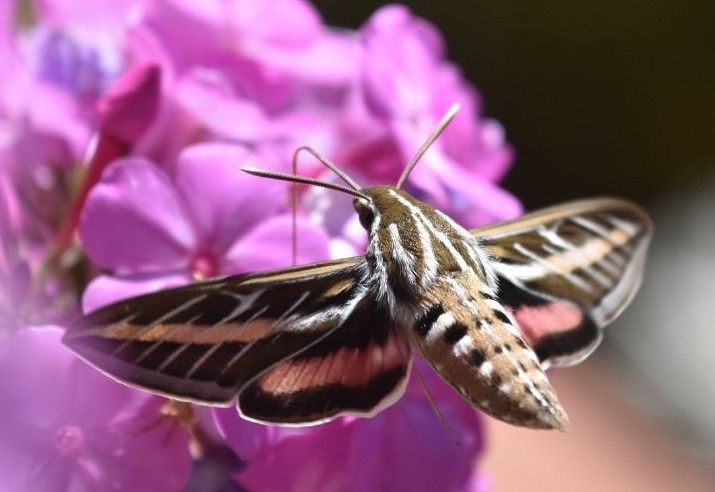
Flowers that Attract Moths
There is something special about smelling flowers that open after dark and moths think so too. Moths are nocturnal and they like white/light colored flowers that are fragrant in the evenings, they visit flowers for nectar, and they are much more efficient pollinators, more so than butterflies.
The Butterfly Bush is aptly named for its ability to attract butterflies, but did you know the anatomy of its flowers is just right for moths too? Moths tend to favor white flowers, so we recommend planting the ‘White Profusion’ variety.
Cleome, aka the spider flower, is not a popular annual. They may be considered a little boring in their immature form, but once established, these plants will grow up to six feet tall with eight-inch blossom clusters until frost.
Moths adore pale-hued flowers on evening blooming plants, and the evening primrose is no exception. A hardy biennial this plant can handle drought conditions. The evening primrose is a multipurpose plant, in that both the nectar and the foliage will serve as food and shelter for moths.
Flowering Tobacco is an annual that provides height to a flower border, and a wafting fragrance especially in the evening. Flowering tobacco thrives in hot, humid areas; they are usually passed over by most deer and rabbits which makes them a great addition to any garden. Plant a white variety like ‘Perfume White’ or ‘Only the Lonely’.
Keeping a garden too tidy makes it hard for moths to find a place to hide from predators and a place to seek shelter from the elements. Growing plants like native honeysuckle benefits moths in two ways: by providing a nectar source and by giving them a natural tangle of leaves and stems where they can hide. Pick native honeysuckle over non-native which is invasive.
Plant any of the single white impatiens to light up your shaded garden and attract moths. African hybrids, in their pale peach and yellow tones, are also attractive to moths. Cluster a group of pots filled with impatiens in the shade of host trees like hickory, maple, or oaks, and you will provide food for both the caterpillars and adults.
Moonflowers will reveal their beauty in the evening limelight, but they require hot weather to grow and bloom. The moonflower will need something to twine around on and may climb up to 10 feet. Moths will be attracted to the white color and the fragrance.
Petunias are a great addition to any garden, with a variety of bright, playful colors and beautiful vining stems. When choosing petunias for your pollinator garden, you should look for the single varieties instead of the new ruffled hybrids which makes it hard for the butterfly to access the nectar.
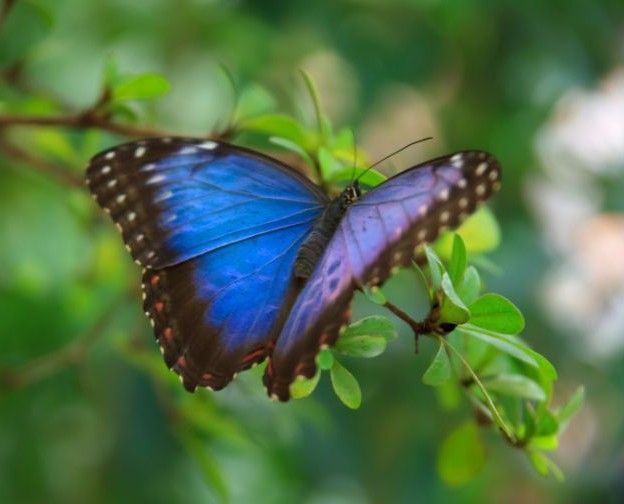
Trees that Attract Butterflies
Planting flowering trees in your garden will invite butterflies to eat the nectar carrying away pollen with them and pollinating other plants as they go. Plant the trees in an area that gets some sun but is sheltered from winds. You could plant some fruit trees for you and the butterflies.
Black Cherry trees, when mature, boasts bark that resembles burnt potato chips and crushing any part of the tree releases an almond fragrance. It grows fragrant white flowers in the spring that attract several species of butterfly. The black cherry is native to eastern North America, hardy in zones three through nine. It likes full sun and has a mature height of sixty to ninety feet tall.
Flowering Dogwoods have a spreading crown that produces long-lasting white, pink or red flowers in the spring, and red fruits in the fall. The flowering dogwood grows best in part or full sun and is hardy in zones five through nine. It will grow fifteen to forty feet tall.
Butterfly Bush also attracts hummingbirds, not just moths and butterflies. It has fragrant red, pink, blue and white flowers that bloom all summer. It is shrub-like in form, is low maintenance, drought tolerant, and deer resistant. The butterfly bush likes full sun, is hardy in zones five through ten, and has a height of about eight feet tall.
Black Willow - these yellow flowering trees have small brown capsules of seeds that attract butterflies. It is a small to medium sized tree that grows well in moist conditions and can be a shrub or tree depending on the maintenance. It does well in partial shade or full sun, and it is hardy in zones three through eight. Mature height can be ten to one hundred forty-eight feet depending on the area.
Eastern Redbud – these are tone of the earliest to bloom as winter ends. They produce pink blossoms during early spring. The Redbud is native to eastern and midwestern United States. They prefer part shade to full sun and is hardy in zones four through nine. Mature height is twenty to thirty feet tall.
Chokecherry – produces sprays of dainty-white flowers full of nectar, its fruit is a tart drupe that is common for sweetened fruit preserves and wine. The Chokecherry grows best in part shade to full sun, it is hardy in zones two through seven. Mature height is twenty to thirty feet tall.
River Birch – are ideal for growing along wet areas like a pond or stream. It has multiple trunks, peeling brown bark and produces flowers that butterflies enjoy. The river birch requires part shade or full sun and will tolerate both wet and dry conditions. It is hardy in zones four through nine and the mature size is forty to seventy feet tall.
Spicebush – this is a butterfly loving bush, it has small yellow flowers in the spring, thick green leaves in the summer and bright yellow leaves and red berries in the fall. It is a deciduous tree, and if you crush the leaves of the spicebush, it gives off a pleasant fragrance. It is hardy in zones four through nine and grows anywhere from six to twelve feet tall.
Sassafras – have medium green leaves with spectacular colors during the fall. They are commonly ground up and used for spices. They also produce small fruits that will attract butterflies to your garden. The sassafras needs full sun or part shade to thrive and grow best in well-drained soil. They are hardy in zones four through nine and will grow between thirty and sixty feet.
Sourwood – this tree has white blooms that resemble lily of the valley flowers during the summer. Its green foliage turns bright red in the fall. They prefer part shade or full sun; they are a great ornamental addition to your garden. The sourwood is hardy in zones five through nine and they grow twenty to seventy-five feet tall.
Staghorn Sumac – has open branches, the hairy stems resemble stag horns, and the fern like green leaves turn vibrant colors in the fall. It produces fuzzy red fruits and green-yellow flowers that attract many butterflies. The staghorn is drought and dry soil tolerant, prefer part shade or full sun. They are hardy in zones four through eight, will have a mature height of fifteen to twenty-five feet tall.
Sweetbay Magnolia – have exotic looking cones and creamy white flowers in the spring and summer. The blooms have a sweet and lemony fragrance, the leaves have a spicy scent that attracts butterflies. The Sweetbay magnolia requires slightly acidic soil to thrive and love part shade and full sun. They are hardy in zones five through ten and grow anywhere from thirty to fifty feet tall.
Firebush – butterflies love its nectar rich, orange-red flowers that are tubular shapes, and the stems and leaves are popular for relieving insect bites and rashes. It requires plenty of sunshine. This bush is not cold hardy, it grows best in zones eight through eleven, and will get to be four to five feet tall.
Herbs that Attract Butterflies
Herbs are often left out of a pollinator garden, bushes, flowers are what most think of for a garden. A successful garden for pollinators provides both nectar plants, which provide food for butterflies, and host plants, which provide food for their caterpillars. Herbs can do both of these things.
Bee Balm – a perennial, it is a member of the mint family, it spreads but not invasive. There are four varieties, one with a red flower, the wild bergamot with lavender flowers, and two with lavender to lilac flowers known as lemon mint. Bee balm prefers full sun but can tolerate some shade. It is hardy in zones three through nine and grows between two and four feet tall.
Lavender – very fragrant and showy, it is attractive to pollinators and gardeners. You can grow lavender for pollinators and yourself. It prefers hot and dry conditions with well-drained soil but requires good airflow. Color varieties are blueish-purple, lavender, white and pink. It likes full sun and is hardy in zones five through nine.
Catnip – also known as catmint, butterflies are very attracted to catnip, it can take over a garden if not contained. You can plant it in a pot then bury it in the ground up to the rim of the container. It is a perennial, comes in different varieties, tall, short and sprawling. If you cut the plant down after the first bloom, it will regrow and bloom again, soil needs are moderately rich loam or sandy with good drainage. Color varieties are white and lavender. Catnip likes full sun and is hardy in zones three through nine.
Chives – the fat fluffy blossoms are irresistible to insects, butterflies especially. Chives are a clumping herb, and they will self-seed. They should be lifted and divided every two to three years to keep the clumps growing. Chives need medium moisture and well-drained soil. The flower color of the chives is purple. They like full sun to part shade and are hardy in zones three through nine.
Fennel – it is showy, growing up to five feet tall or more, with a similar spread. Butterflies love it like no other herb. You will need to take care when harvesting to avoid disturbing caterpillars that will become butterflies. Fennel is easy to grow but do not grow it next to dill. Fennel needs rich, moist, well-drained soil. The bloom is yellow on fennel. It likes full sun and is hardy in zones four through nine.
Yarrow – is used mainly for medicinal purposes, often in teas to relieve digestive problems. Its spicy scent and showy flowers can withstand harsh treatment, and it continues to bloom long after other flowers succumb to drought or lack of sunlight. Yarrow depending on the species can spread aggressively, cultivators aren’t as bad. If grown in too moist soil, the plant can flop and require staking, they prefer dry to medium moisture, loamy/sandy soil. The color varieties are pink, red, cream, yellow, and white. They like full sun and are hardy in zones three through nine.
Parsley – is a biennial plant usually grown as an annual. It grows in clumps of lacey foliage about a foot high, makes for a good garnish or an addition to recipes. Parsley is pollinated via bees and other pollinators. Its blooms are especially attractive to black swallowtail butterflies, where they commonly lay eggs. It likes loamy, moist, well-drained soil. The flower is a whitish yellow. Parsley prefers full sun and is hardy in zones two through eleven.
Dill – its foliage makes it ornamental, it self-sows, grows quickly. Dill leaves and seeds are used for seasoning. It attracts many pollinators and butterflies, particularly the Eastern black swallowtail. Dill needs well-drained soil, and the flower is yellow. It prefers full sun and is hardy in zones two through eleven.
Basil – is one of the easiest herbs to grow. Sweet basil is part of the mint family, does not spread like mint. Its aromatic leaves come in many flavors from lemony to cinnamon and licorice. Leaf colors range from rich green to deep purple. Butterflies love to visit a basil plant for the high-energy, sweet nectar. Basil needs moist, well-draining soil. The flowers are small and magenta in color. It prefers full sun and is hardy in zones three through seven, but you should wait to plant it till May, after the last frost.
Mint – is a hardy perennial with long stems that will grow upward, flop over and roots from where the stems touch the soil, spreading aggressively. Mint needs loamy, moist and well-drained soil. The color varieties are white, purple, and pink, they attract butterflies and other pollinators. Mint prefers full to partial sun and is hardy in zones three through eleven.
Sage – a perennial that is easy to grow, it is a shrub like plant with wooly leaves that are aromatic. Sage is pollinated primarily by bees and butterflies. It is an excellent herb to attract butterflies. Sage needs sandy, loamy, and well-drained soil. Spikes of bluish-purple flowers appear in the summertime. It prefers full sun and is hardy in zones three through eight.
Are you familiar with the practice of companion planting? Pair up the right plants to naturally repel pests and attract pollinators. When paired together, companion plants improve each other’s health and yields. Check out our blog on companion planting.
Conclusion
When planning a garden for pollinators, different pollinators require different shapes of flowers, and some may only visit to feed on a particular bloom and plant. They tend to like a single open flower. Pollinators don’t like double, multi-petalled and highly hybridized flowers, they may lack pollen and nectar and be difficult to access.
When considering how to attract butterflies, it is important to ensure that you have lots of different flowers available. There are some flowers which are so deep that they are much more accessible to butterflies and moths with longer tongues, such as phlox and dianthus. It is a good idea to plant a range of plants with different shapes that flower through the year. Butterfly borders can provide lots of food for other types of insects, like bees and hoverflies, too, so they will go a long way to helping local populations of other pollinators.
Many adult moths and some butterflies can be catered for in gardens by providing plenty of plants for pollinators, while their caterpillars have more specific requirements. If you have space for a mixed grass meadow or a large patch of nettles in a sunny position, you may be lucky, and some species of butterfly may lay eggs.
Attracting butterflies and moths to your garden couldn’t come at a better time, with deforestation happening, we as gardeners have an important role, we can help by planting flowers, herbs and trees to help pollinators. Our gardens are a corridor between natural habitats.
References:
10 Tips for Building a Pollinator Garden | The Old Farmer's Almanac
How to Grow a Pollinator Garden - Birds and Blooms
Gardening for Pollinators | US Forest Service (usda.gov)
How to attract butterflies – how to make a butterfly garden | Homes & Gardens (homesandgardens.com)
Flowers for Moth Gardens (thespruce.com)
14 Stunning Trees that Make Butterflies Happy (tipsbulletin.com)
10 Herbs for a Butterfly Garden (thespruce.com)
Herbs for a Butterfly Garden - Advice From The Herb Lady
29 Flowers That Attract Butterflies - Garden Plants That Attract Pollinators (countryliving.com)
How to Attract Bees to Your Garden: 14 Plants for Pollinators - 2023 - MasterClass
Images - Canva
Check out the latest:
